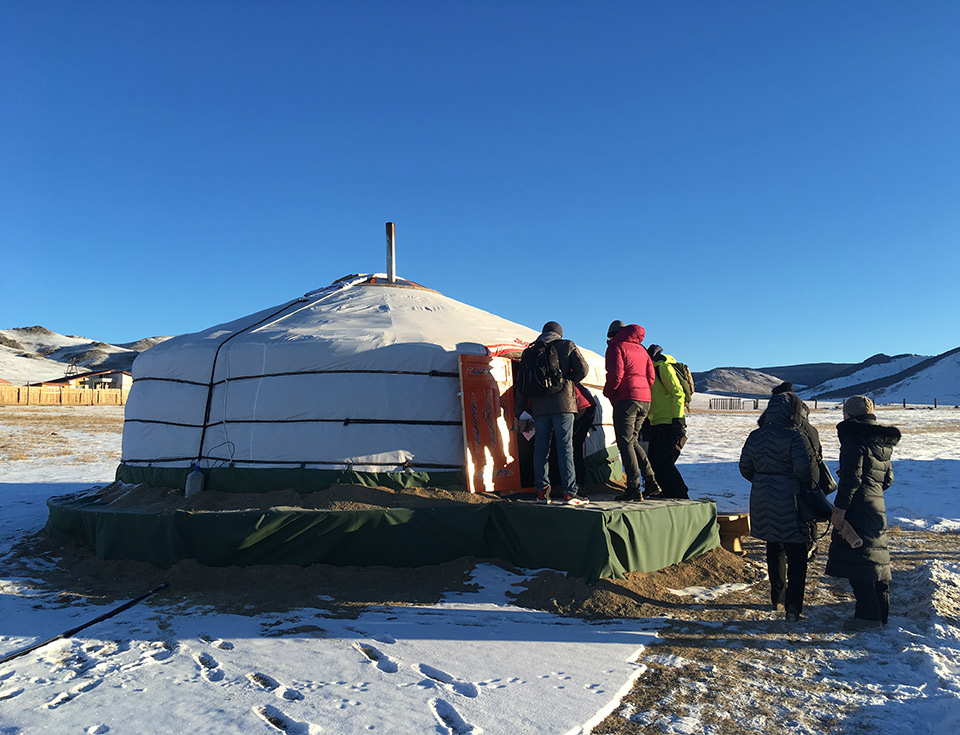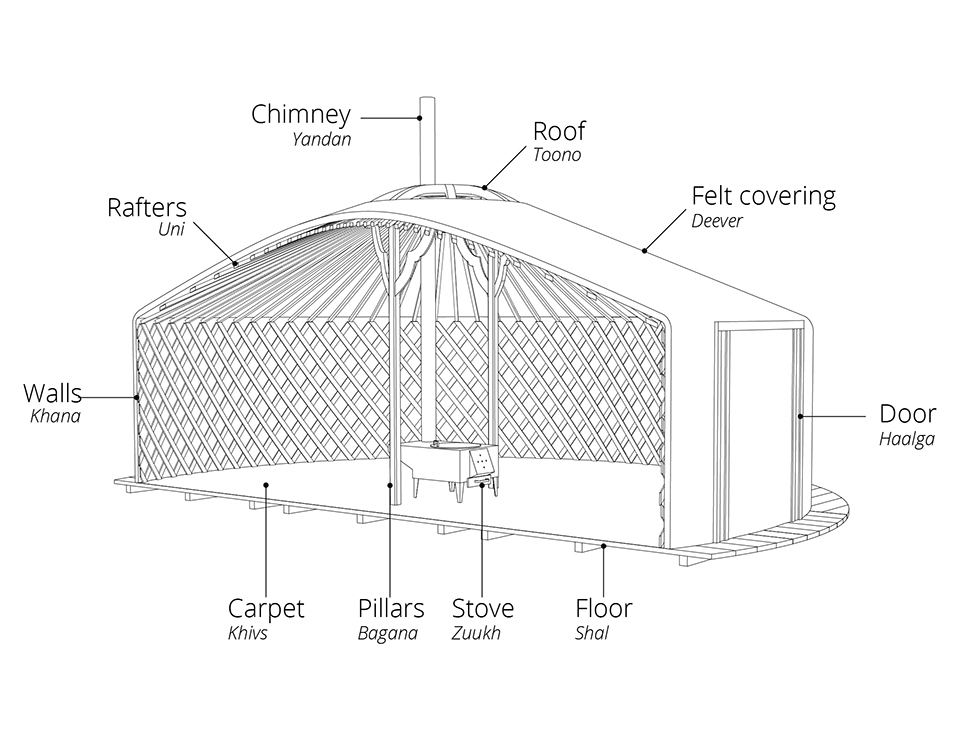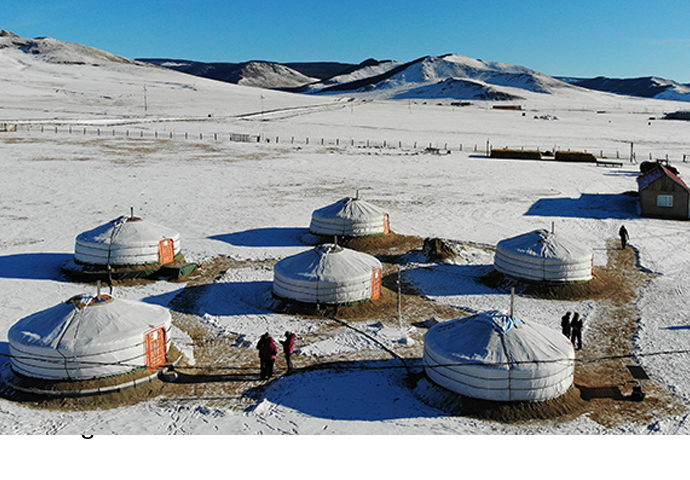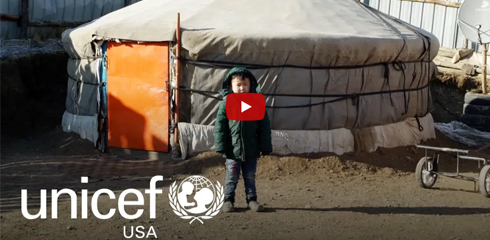Improving Building Performance in the World's Coldest Capital City
Since 2018, KieranTimberlake has partnered with UNICEF, GerHub, Arc'teryx, The North Face, the University of Pennsylvania, and others to reimagine the traditional Mongolian ger in order to find low-cost, high-value solutions for decreasing coal consumption and improving indoor air quality in the capital city of Ulaanbaatar.
We began by working closely with Mongolian communities to better understand how they kept their homes warm and improved their gers' thermal performance during brutal winters—the city is the world's coldest capital and regularly sees temperatures below -40 ºC. Five families allowed us to collect thermal data on their homes over the winter, providing our team with valuable insights into real-life fuel use and building performance.
The project's experimental gers were constructed during a team workshop this past fall. The data collected from the gers will help us evaluate which thermal performance strategies are most effective and develop future prototypes
At the same time, our team devised a controlled testbed dubbed the “Ger Ranch” that consists of six experimental gers that each feature a different combination of prototyped improvements to the door, roof, and floors. Designed by KieranTimberlake, Arc'teryx, and The North Face and built by GerHub this past fall, each of the prototypes isolates a specific thermal flow or explores a heat retention strategy such as insulation or radiation.
Each dwelling tests one or more floor, door, roof, or wall prototypes and looks at how each of these elements perform with both traditional coal stoves and electric heating.
All six gers are wired with thermal and air quality sensors deployed and monitored by the University of Pennsylvania's Center for Environmental Building and Design. These sensors have been recording thermal data all winter to help our team evaluate the various prototypes and build a sophisticated understanding of energy performance in this unique building type.
The data generated during this wintertime experiment will help us create a working energy model of a traditional ger. It will also help us evaluate which thermal performance strategies are most effective and develop future prototypes. Stay tuned for more updates as the team synthesizes the data and continues to explore pathways for healthy, coal-free housing.






